Staying on top of how prescribers adapt to clinical and competitive changes is more important, and more challenging, than ever. In high-stakes categories like oncology, one-off research snapshots often fall short. Brand teams need a way to consistently monitor how prescriber behavior evolves in response to new indications, updated treatment guidelines, and shifting therapeutic dynamics.
That’s why we created a repeatable, longitudinal framework designed to provide both stability and flexibility.
In one recent oncology project, this approach played a crucial role in helping a client navigate an indication expansion, moving from a well-established position in one setting to a new, more competitive one in another.
The Challenge: Navigating Prescriber Behavior After Indication Expansion
The client had just received FDA approval for a new indication. While their therapy was familiar to many oncologists, this expansion brought them into a subcategory already crowded with established competitors.
They needed quick answers to some key questions:
• How are physicians reacting to the new indication?
• Is uptake consistent across specialties and provider types?
• What types of patients are most likely—or least likely—to receive the treatment?
• How is the competition responding?
A single wave of research wasn’t going to cut it. They needed a solution that would deliver timely, detailed insights on an ongoing basis.
Methodology: Building a Month-by-Month Picture
We launched a monthly chart pull initiative with a panel of 125 oncologists—many of whom were already familiar with the product. Each month, these physicians submitted anonymized charts from four recent patients, covering treatment decisions, diagnostic tests, clinical factors, and patient characteristics.
By asking the same questions to the same panel at the same cadence, we built a dataset that allowed us to observe not just whether usage was increasing, but why. The consistent format meant we could track subtle shifts in prescriber thinking over time.
Key Findings: Clear Signals in a Complex Market
The data revealed several critical takeaways:
• Within the eligible patient population, the category grew 243% following the indication expansion.
• Prescriber adoption was swift. 7% of eligible patients received the therapy in the first month alone.
• Over seven months, usage climbed 164%, with steady gains.
• Interestingly, while the broader category lifted all boats, our client’s therapy stood out as the only one with a corresponding increase in stated intent to prescribe, an encouraging sign of deeper confidence among physicians.
Because we collected clinical data alongside usage patterns, we were able to pinpoint patient subgroups with the highest growth potential. These findings helped the client tailor their messaging and targeting more precisely.
Lessons Learned: What This Framework Reveals
What makes this framework effective is its consistency. Tracking behavior over time, rather than relying on isolated data points, offers several advantages:
• Early visibility into meaningful trends
• A deeper understanding of clinical drivers
• Insights that reflect real-world patient and physician diversity
• Flexibility to segment findings in useful ways, by region, specialty, experience, and more
It’s also scalable. The same model can be adapted to different therapeutic areas, competitive situations, or stages of the product lifecycle.
Strategic Impact: Turning Insight Into Agility
In a market where prescriber decisions are influenced by fast-changing clinical evidence, payer pressures, and competitor moves, brand teams need more than static data. They need ways to detect shifts early, understand what’s behind them, and respond with agility.
This framework isn’t just a research tool, it’s a way to bring more clarity and foresight into brand strategy. Whether preparing for launch, expanding into new indications, or defending share in crowded markets, being able to track behavior over time can be a real differentiator.
It helps brands move beyond reacting to change and start staying ahead of it.
About KS&R
KS&R is a nationally recognized strategic consultancy and marketing research firm that provides clients with timely, fact-based insights and actionable solutions through industry-centered expertise. Specializing in Technology, Business Services, Telecom, Entertainment & Recreation, Healthcare, Retail & E-Commerce, and Transportation & Logistics verticals, KS&R empowers companies globally to make smarter business decisions. For more information, please visit www.ksrinc.com.

